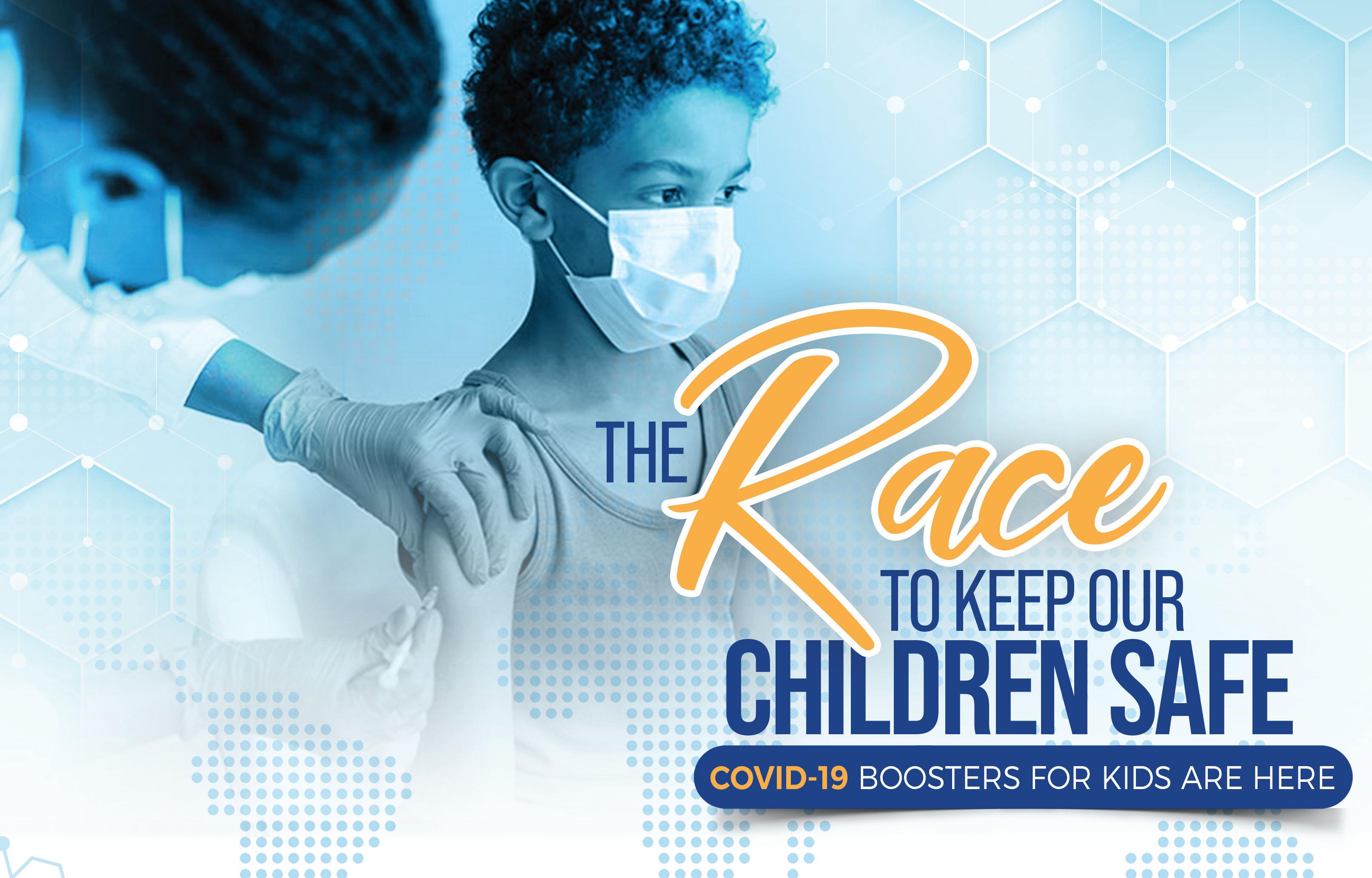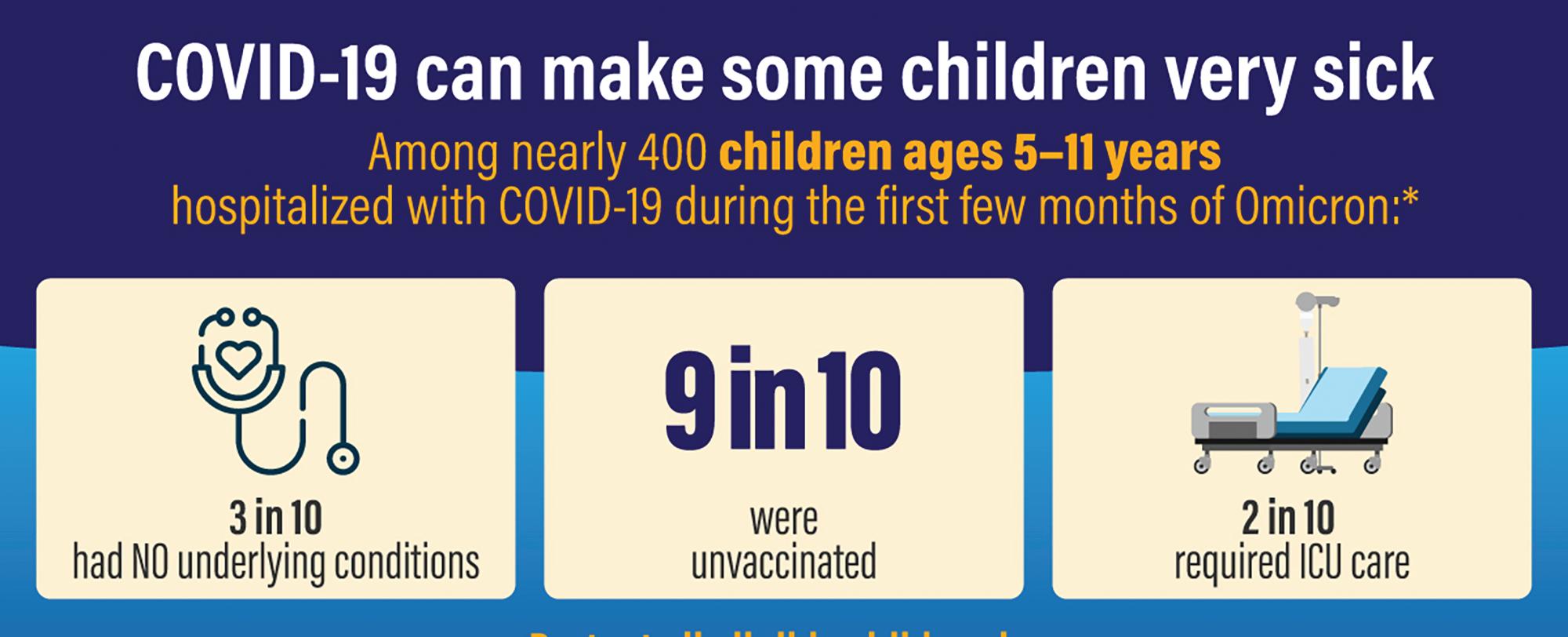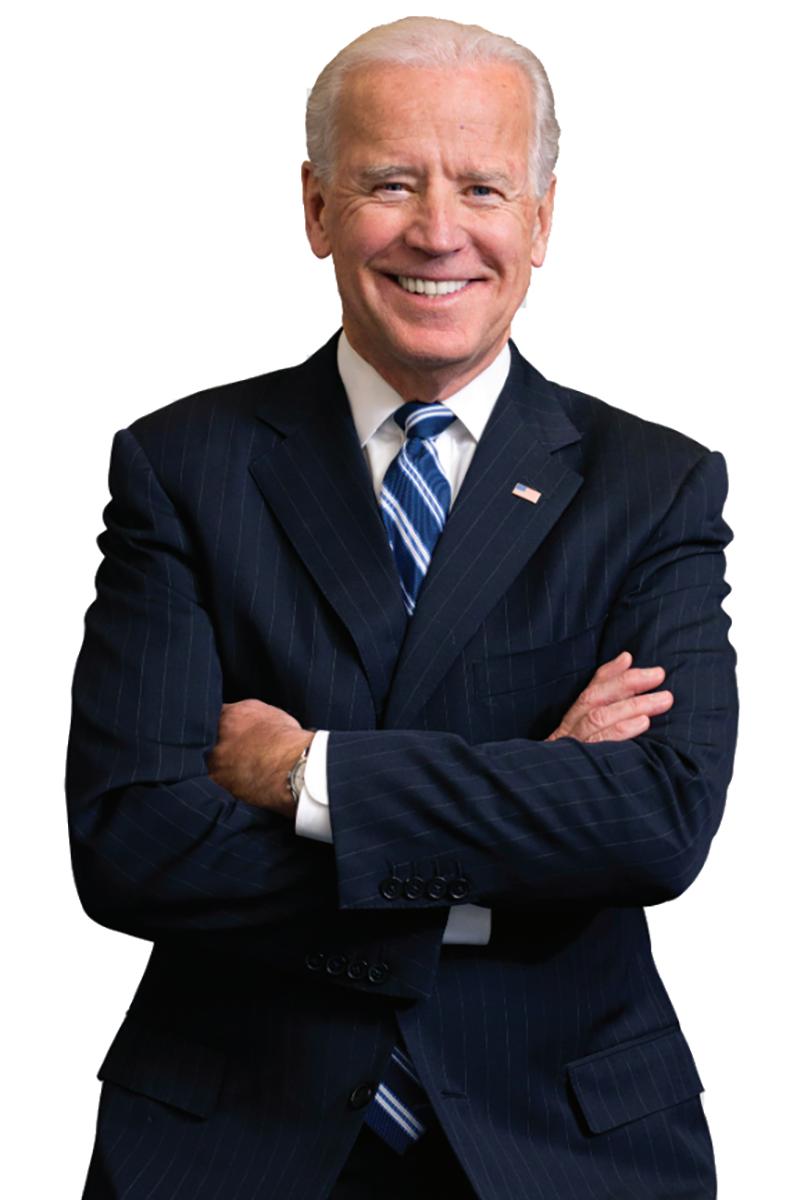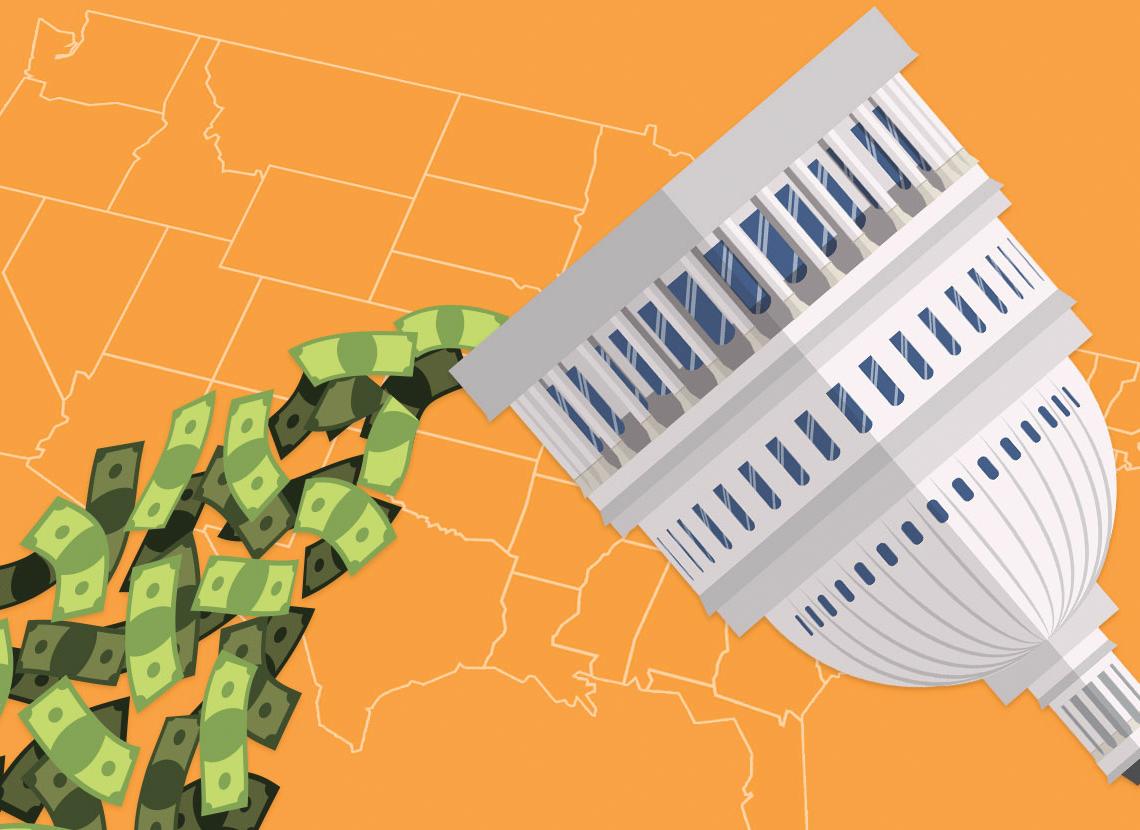
25 minute read
Head 2 Head
To Forgive or Not to Forgive Student Debt?
President Joe Biden must cancel the student loans now. Black people need it and deserve it, and this is a racial justice issue.
Advertisement
After pressure from activists and a prolonged two-year pause on federal student loan payments brought about by the COVID pandemic, the Biden administration is considering a plan for student loan forgiveness. The White House has floated ideas such as providing relief to individuals earning $125,000 or less and couples making up to $250,000 and canceling at least $10,000 in debt per borrower–which is nowhere near enough–but not $50,000 or more, as Senate Democrats have suggested.
Americans owe a staggering $1.7 trillion in college debt, mostly federal loans. That’s nearly half a trillion more than auto loans and double the amount of outstanding credit card debt in the U.S.
The student loan payments are too damn high. We know this, and Black people know this more than most. While the need for relief from this staggering amount of debt is nationwide and runs across the entire population–including the 43.4 million people who owe federal student loans–the impact lands a particular way for Black borrowers.
Black college graduates have an average of $52,000 in student debt, which is $25,000 more than their white counterparts, according to the Education Data Initiative. Over half of Black borrowers owe more than their net worth, and monthly payments are a struggle, as they are more likely to miss payments and default on their loans. And four years after graduation, 48 percent of Black students owe an average of 12.5 percent more than the amount of the original loan!
And it is no surprise that as members of two marginalized groups and the victims of racism and sexism, Black women have more student debt than any other demographic in America. Yet, they often are students and
Student loan parents at the same time, have few forgiveness is a resources to repay the debt. And step towards their salaries are lower than their racial justice male and White counterparts, notes The Education Trust’s National Black Student Debt Study, Even with income-driven repayment (IDR) plans that cap monthly payments based on one’s income, these plans do not reduce the loan principal. Defaults persisted for Black borrowers before the pandemic pause on loan repayments, and student loans emerged as a lifelong debt you can’t get out of, can’t get over, and can’t get from under. Everyone wants to David A. Love get an education to move up the ladder, get ahead and make a better life for themselves and their family. But how do you do that when you are crippled with all that debt? Then there’s the racial wealth gap. Due to institutional racism, systemic discriminatory practices and all those years of stolen and unpaid labor and an inability to build intergenerational wealth, Black people cannot catch a break. Degree or not–and many borrowers never earned their degree–Black people make less than white people due to racism, yet they must take out more student loans while supporting their children and their parents. No intergenerational wealth. The pursuit of education through student loans increases the racial wealth gap and fosters the fragility of the Black middle class, according to Brookings. The average white family has 10 times the wealth of an average Black family, and white college graduates have seven times the wealth of Black college grads. More debt means a lower credit score, and with no assistance Larry Elder continued to page 26 L ending money is not, as they say, rocket science.
According to the Federal Reserve Bank of St. Louis, in the last quarter of 2021, of the total of all outstanding business loans from all commercial banks, 1.08% were delinquent.
Per the Federal Reserve Bank of New York, as of second quarter 2021, a little over 2% of the $1.4 trillion outstanding in auto loans were delinquent. Yet in the student loan market, totaling around $1.6 trillion, not that different from the total size of the auto loan market, an average of 15% are in default at any given time, per the Education Data Initiative.
It should be clear what the problem is.
Auto lenders make sure that those to whom they lend can and will pay back the loan. They are careful because if the borrower defaults, the lender loses.
But if, tomorrow, President Joe Biden or Sens. Elizabeth Warren or Bernie Sanders decide that it is not fair that there are Americans without new cars and managed to get government guarantees for auto loans, is there any doubt that there would be a dramatic rise in defaults on car loans?
Those lending wouldn't care who they lend to because they wouldn't take the loss on a default. You and I, we taxpayers, would, as we will if Biden and his party have their way to wipe out student loans.
Of course, "wipe out" is not the
Students Must right terminology. Debts don't Take Respon- get wiped out. They just get sibility for Their transferred to someone else. In Debt the case of government guarantees, that someone else is taxpayers. The concept of student loans backed by the government is another child of the allegedly compassionate 1960s. Doesn't it make sense to help the less fortunate obtain funds to pay for college? But as many theologians and philosophers have noted, the greatest charitable act is to help another individual take control of their own life. Teaching personal responsibility is the most valuable gift that one can provide another. Star Parker Our American compassion, our moral compass, has gone awry. A child growing up in America today looks around and finds himself or herself in a nation where debt is larger than the entire economy, and still growing. But just as inflation shows that the costs of fiscal irresponsibility cannot be hidden, so the costs of teaching our youth that personal responsibility is irrelevant cannot be hidden. It manifests in the destructive behavior we see now. The Wall Street Journal reported that one student loan adviser told them, "I'm seeing them say, 'I'm going to take out more loans now and go buy GameStop stock with it because it's going to get forgiven anyway.'" A new Gallup survey reports "32% of currently enrolled students pursuing a bachelor's degree report they have considered withdrawing from their program for a semester or more in the past six months." Thirty-six percent attribute this to Jessica Johnson continued to page 26
Headlines From Africa
A look at current news from the continent of Africa
Benin: After 130 years, France returned 26 royal pieces from the Danxomè (also called Dahomey) Kingdom under an initiative to encourage better relations with African countries. The much-celebrated return of the treasures culminated in a month-long celebration of heritage and art at the Museum of the Marina in Cotonou, Benin, attracting large crowds.
Botswana: The Republic of Botswana plans to construct a $2.5 billion plant to convert coal into liquid fuels in order to reduce the country’s dependence on imported fuel. Operating under a public-private partnership model, the coal-to-liquids plant is expected to produce an estimated 12,000 barrels of diesel and gasoline per day during its planned 30-year lifespan.
Burkina Faso: Burkina Faso is facing its worst hunger crisis in six years, more than 630,000 people are on the brink of starvation, according to the UN.
Democratic Republic of Congo: Fighting in eastern Democratic Republic of Congo between the army and M23 rebel group has forced more than 72,000 people from their homes, the United Nations said. The M23, a rebellion claiming to represent the interests of ethnic Tutsis in eastern Congo, is said to be staging its largest offensive since a 2012-2013 insurrection that captured vast swathes of the countryside.
Gambia: The Gambian government has said it will prosecute former President Yahya Jammeh for murder, rape, torture and other alleged crimes committed during his more than 20-year rule from 1994 to 2017. Jammeh is currently living in exile in Equatorial Guinea, which has no extradition treaty with The Gambia.
Liberia: Minister of Foreign Affairs, Dee-Maxwell Kemayah, has re-echoed Liberia’s support for the Declaration on Terrorism and Unconstitutional Changes of Government in Africa. He emphasized that stable settlements, economic growth, and development were being undermined in all five regions of the African continent. Mali: Mali’s military government says its security forces thwarted an attempted coup, led by army officers and supported by an unnamed Western state. The government’s announcement follows years of turmoil. Mozambique: At least three people have been beheaded in a new outbreak of Islamist violence in northern Mozambique. Nearly 4 000 people have been killed and 820,000 displaced from their homes since jihadist unrest erupted in northern Mozambique in October of 2017.
Namibia: Namibia launched a sovereign wealth fund months after oil discoveries off its coast. “We are looking forward to the prospects and opportunities that will emanate from the recent discoveries of oil and the green hydrogen energy, which have the potential to further boost the fund’s capital,” President Hage Geingob said.
Nigeria: Thousands of churches across Nigeria recently demanded an end to sectarian killings horrified by the mob assault on a female university student accused of blasphemy.
That student, Deborah Samuel was beaten to death and set on fire by fellow students at Shehu Shagari College of Education in Nigeria’s northwestern-most state of Sokoto,
Rwanda: The family of Paul Rusesabagina, the man portrayed in the film Hotel Rwanda, is suing the nation of Rwanda for $400 million, saying he was abducted, tortured and illegally imprisoned. Rusesabagina has been detained for 20 months on terrorism charges that human rights groups call a sham.
South Sudan: With a corruption perception index score of 11, South Sudan ranks as the most corrupt country in the world according to the latest annual report from Transparency International. It is followed by Somalia (#2); Libya (#3), Equatorial Guinea (#4); and the Democratic Republic of the Congo (#5).


Along with the rest of California, L.A. County is seeing a rise in overall coronavirus cases. This comes after the lifting of several mask mandates around the country. The U.S. is now averaging 100,000 new coronavirus cases a day for the first time since February, and during the month of May, the number of L.A. County COVID-19 hospitalizations rose to its highest level since March.
Five subvariants of the Omicron strain are circulating and more are developing.
More than 350 children ages 5 to 11 have already died from the virus, according to the Centers for Disease Control and Prevention (CDC). The CDC’s count also estimates that three out of four U.S. children between these ages have been infected since the pandemic’s start.
In California, approximately 274,000 children under the age of five and more than 1.3 youth between the ages of 5 and 17 have been infected with the virus as of April 2022.
The U.S. Food and Drug Administration (FDA) has authorized a COVID-19 vaccine booster for children ages 5 to 11. The Pfizer-BioNTech vaccine is currently the only vaccine approved for children and is available for those who completed their primary series at least 5 months ago. State officials have formally supported the newly authorized booster dose and are urging those eligible to get boosted as soon as possible.
In a clinical trial of over 2,000 children between the ages of 5 and 11, it was found that the vaccine was over 90 percent effective in preventing COVID-19 symptoms.
“The Pfizer-BioNTech COVID-19 Vaccine is effective in helping to prevent the most severe consequences of COVID-19 in individuals 5 years of age and older,” said Peter Marks, M.D., Ph.D., director of the FDA’s Center for Biologics Evaluation and Research.
Despite its safety and easy access, just 30 percent of 5 to 11 year olds in L.A. County have been vaccinated with the lowest vaccination rates being among Black and Latino children - compared to the 80 percent of teens and adults. Health officials are urging parents to prioritize getting their children vaccinated, and make sure that the over 255,000 children eligible for a booster shot receive one.
“Our bodies need a boost to remain highly protected,” said L.A. County Public Health Director Barbara Ferrer at a recent press conference. “We also know that in L.A. County over the past month, cases among children 5 to 11 increased 264%. This is a faster rate of increase than what we saw in young adults ages 18 to 49 where the increase was 116%.”
Dr. Donna White Carey, who has spent over two decades in clinical medicine and is the executive pastor of True Vine Ministries in West Oakland, uses her YouTube channel, “Talking with Dr. Donna” to answer health questions about the coronavirus and more. She also led the church’s COVID response efforts, during which they were able to vaccinate almost 8,000 people. The church’s success can be attributed to her ability to effectively quell concerns and not shame those who hold what she calls, “justified mistrust.”
“It made absolute sense,” Dr. Donna White Carey told L.A. Focus. “You have a new virus. You created a brand new vaccine using brand new technology. You would be a fool to not have questions. Particularly in our community where racism and historical mistreatment of our bodies is documented for centuries.”
She believes physicians should have to earn the trust of the Black community.
“Our bodies have been misused and abused from the time of slavery until present day by the medical and scientifc community. And we cannot ignore that,” she
CHRISTAL MIMS
Contributor
We don’t know the long-term impact of COVID on our bodies. We are starting to see that now. For example, the spurt of hepatitis around the world. Half of the kids in the studies who died of hepatitis have tested positive for coronavirus in the past. We need to have a lot more open forums for parents to come and talk to professionals and get their questions answered, especially in the Black community. We need to get back to basics. I know wearing masks is annoying, but I want to stay around. And I don’t want to be sick. ”
said.
Booster doses are a normal part of most vaccine series and have proven to be the most efficient way to maintain immunity and protection from infection.
“The booster shot is necessary for all of us. We know that the vaccine wanes after about 6 months,” Carey said. “The booster revs back up your antibodies so if you come into contact with COVID, your body is able to fight it off.”
L.A. County health officials are monitoring several outbreaks in schools, making the necessity of booster shots even more apparent.
“While we recognize that many children who test positive experience mild illness, national trends are showing increases in cases and hospitalization rates for children and more concerns about long term impacts of even mild infection in children,” Ferrer said in a statement. “We encourage parents, students, teachers, and staff, during this time of high transmission with the most infectious strains seen to date, to wear a mask when indoors and get vaccinated and boosted when eligible.”
According to the Department of Public Health, there were 5,918 positive cases at L.A. County schools during the week ending May 15 compared to the 2,742 positive cases just a month prior. Ferrer is encouraging school staff and students to take the proper precautions after exposure.
“If we can all do our best to protect each other, and those who are more vulnerable to severe illness or death, we can safely celebrate the end of the school year and enjoy the beginning of summer,” she said.
“Vaccination with a primary series among this age group has lagged behind other age groups leaving them vulnerable to serious illness,” said CDC Director Dr. Rochelle Walensky, in a statement. “We know that these vaccines are safe, and we must continue to increase the number of children who are protected,” she said.
A small study concluded that the approved Pfizer vaccine increased the amount of virus-fighting antibodies in young children, including those able to fight off the extremely contagious omicron variant. The omicron surge resulted in twice the rate of hospitalizations amongst children ages 5 to 11 who were unvaccinated versus kids who’d received their first two doses. Black children specifically made up about a third of those hospitalized during the alarming winter surge.
“Increasing vaccination coverage among children, particularly among racial and ethnic minority groups disproportionately affected by Covid-19, is critical to preventing Covid-19-associated hospitalization and severe outcomes,” a C.D.C. study stated, after finding that racial disparities were leaving Black children more exposed to severe illness from the virus.
Dr. Carl Earl Lambert Jr.,MD, an assistant professor and member of the American Medical Association, believes education needs to be at the forefront of outreach efforts, not blame.
“If there’s hesitancy, we don’t get frustrated or angry. We try to see the ‘why’ behind that and handle that with an inquisitive spirit,” he said. “Are we thoroughly educating our patients about the vaccines? Are we treating vaccine hesitancy?”
Dr. Donna White Carey also believes it’s important to speak a language that people can understand and focus on not talking at them, but to them.
“Let’s break it down to where it’s just me and you, and we’re just having a conversation,” Carey explained. “I’m not talking over your head and using all this medical, scientific jargon that you can’t understand.”
The pandemic has undeniably affected everyone, but children have had to face incalculable damage socially and mentally, especially in regard to their academic growth. A Kaiser Family Foundation (KFF) study revealed that Black and Hispanic children faced the worst of this impact. Black and Hispanic parents were more likely to say their household suffered a job disruption due to childcare needs since the start of the pandemic. They also revealed that the disruption had a major impact on their family’s finances and stress level.
While some studies are being done to monitor the impact of vaccination among children, health experts are calling for more. Due to the fact that children being vaccinated and boosted is the best way to prevent illness and school outbreaks, it’s crucial to know who is getting vaccinated and when. A lack of vaccination data also prevents school districts from making informed decisions when it comes to outreach and safety.
“We're making sweeping decisions across these very diverse school districts about policies,” said Dr. Rebekah Fenton, a pediatrician and adolescent medicine fellow at Lurie Children’s Hospital of Chicago. “Assuming that it's safe to determine because of high vaccination rates among parents or children themselves, without recognizing the unique needs of certain communities in particular schools.”
More data can also prevent Black and Hispanic children from being left behind in vaccination efforts.
“Without that information, we would potentially get to this place where if COVID was doing well in the larger communities, that smaller communities such as Black and brown individuals will just get looked over,” she said.
A modeling study revealed that 318,981 COVID-19 deaths could have been prevented if the U.S. had reached 100 percent COVID-19 vaccine primary series coverage, all the more reason why the CDC is also strengthening its recommendation that those 12 and older who are immunocompromised and those 50 and older should receive a second booster dose at least four months after their first booster dose.
Dr. Yvonne Maldonado, a pediatric infectious disease specialist at Stanford University, believes outreach messaging needs to highlight the severity of illness that children can face if they contract the virus and haven’t received their booster shot.
“I don't think people take the disease seriously in kids," Maldonado said. "We just need to keep getting that message out that children should be safe. And if we can keep them safe, why not keep them safe?”
The effects of long COVID are also relatively unknown, and there is no telling what impact it could have on a child in the long run. A child being unvaccinated ups the chances of complications in the present, and potentially in the future.
“We don’t know the long-term impact of COVID on our bodies. We are starting to see that now, since it’s been two years,” Dr. Donna White Carey told L.A. Focus. “For example, the spurt of hepatitis around the world. Half of the kids in the studies who have died of hepatitis have tested positive for coronavirus in the past.”
While children aren’t experiencing the same death rate as adults, the long-term impact of COVID on children is just as worrisome and could be harder to trace in the early stages.
“Kids may not have the vocabulary to say that they have a headache everyday, or that they're feeling tired, unfocused or unable to concentrate. But we know that kids are having memory issues and don’t have the same level of energy that they used to,” Carey said.
She believes we have a long way to go when it comes to effectively executing outreach efforts and making the best decisions to lessen positive cases, specifically amongst children.
“We need to have a lot more open forums for our parents to come and talk to professionals and get their questions answered, especially in the Black community,” she said. “We need to get back to basics. I know wearing masks is annoying, but I want to stay around. And I don’t want to be sick.”
The California Department of Public Health (CDPH) is urging every child who is eligible to get boosted, as it remains the best way to prevent hospitalization or death from COVID-19. Californians are also being encouraged to follow the state's SMARTER Steps plan, which includes continuing to wear a mask and getting tested when necessary, in order to continue to protect themselves and their loved ones.

Project to Help Non-Profits Gain Access to Almost $200B in State and Fed Funds Presidential Paydays
TANU HENRY
CA Black Media

Non-profit organizations across California will be able to apply for funding from a pool of cash created with an initial investment of $15 million from two foundations.
The money will help local Community Based Organizations (CBOs) gain access to almost $200 billion in federal and state funding coming down the pike for economic development projects.
The Center at the Sierra Health Foundation, a Sacramento-based organization that promotes health and racial equity, and the James Irvine Foundation, a private San Francisco-based philanthropic nonprofit that advocates for Californians who earn low wages, are the first two foundations investing in the fund called the Community Economic Mobilization Initiative (CEMI).
“CEMI will strengthen nonprofits working in marginalized communities and help them secure and influence the use of public funds designated to reduce economic and environmental inequities,” said Chet P. Hewitt, President and CEO of Sierra Health Foundation and The Center.
This year, California is expected to receive close to $200 billion in federal and state funding. The money will be sourced from the American Rescue Plan ($43 billion) and Infrastructure Investment and Jobs Act ($56 billion), as well as the state’s Community Economic Resilience Fund ($565 million) and its budget surplus ($46 billion). “This is a much-needed investment for communitydriven organizations particularly those that support the most vulnerable Californians. Historically, they have not been invested in the same manner as larger organizations. Many of them were affected throughout the pandemic and need this fiscal and operational support. My hope is that there will be intentionality to be inclusive of the organizations that can have the greatest impact in our communities,” said Kellie Todd Griffin, Convenor of the California Black Women's Collective, an organization of more than 1500 Black women leaders in various professions from different regions of the state. CEMI is expected to begin funding the CBOs in the summer of 2022 with $14 million from the James Irvine Foundation and $1 million from the Center at Sierra Health. “We have a golden opportunity to make sure these investments reach community-based organizations that best know the infrastructure their communities need for economic growth that is inclusive and resilient,” said Don Howard, President and CEO of The James Irvine Foundation.
Howard says the funding from CEMI aligns with the James Irvine Foundation’s mission of supporting lowincome workers because it helps grassroots organizations and community advocates participate in the planning and decision-making that goes into the distribution of public funds.
“We need an economy built on inclusion, equity, and dignity for all work and workers – and that starts by making room for diverse leaders to have a say in how these once-in-a-generation investments shape their communities’ futures,” Howard continued.
The CEMI funding will provide technical assistance and training to the CBOs that qualify to build their capacity and infrastructure and build models for what community-driven economic development looks like, according to the Center at Sierra Health Foundation.
The funders of CEMI say they believe the organizations they support will grow into a strong network that can drive more “equitable economic development policy, regulation and accountability at state and local levels.”
The California Endowment (TCE), a private foundation with headquarters in Los Angeles, has also committed to investing in CEMI.
TCE is a 56-year-old foundation that supports programs that improve the health care of Californians living in underserved communities.
“The availability of state and federal funding Pastor continued to page 26

Biz News Briefs

With her latest move, you can just call Naomi Osaka “the boss”. With the expiration of her contract with global sports agency IMG, Osaka–the highest paid female athlete in the world with a reported net worth of $45 million–teamed up with her agent to launch her own sports agency. "I've spent my career doing things my way, even when people told me that it wasn't what was expected or traditional, Evolve is the natural next step in my journey as both an athlete and businesswoman," Osaka told Sportico, a leading source of sports business news. Her agency, Evolve, will reportedly operate as a small boutique that is athlete driven and “focused on big picture brand building rather than quick checks with a commission attached." The four-time Grand Slam winner has equity in 12
Naomi Osaka’s brands as well as skincare, swimwear and sleepwear Big Move lines. 14
Diddy’s Next Chapter
It’s back to square one and a first love for Sean “Diddy” Combs who appears to be having second thoughts about retiring from music with the recent announcement of a new album on Motown and the launch of a new R&B label, dubbed Love Records.
According to the announcement, the new label–in partnership with Motown– will release singles and collaborative projects from a collective of world-class artists, producers and songwriters.
Said Combs, “Music has always been my first love, Love Records is the next chapter is about getting back to the love and making the best music of my life. For the label I’m focused on creating timeless R&B music with the next generation of artists and producers. Motown is the perfect partner for my album and I’m excited to add to its legacy.” S o just how much does America’s top job pay? Well, according to the latest tax forms released by the Bidens, President Joe Biden earned $378,333 as president during 2021. It would have been $400,000–which is the stated salary–but was prorated since he didn’t officially take over until January 20.
First Lady Jill Biden earned $67,116 from her teaching job at Northern Virginia Community College. Both had their incomes supplemented by pensions, annuities, Social Security, IRA distributions and $61,995 in book royalties for a combined grand total of $610,702.
Ironically, it was the second family that pulled in the most cash reporting a combined income of $1,655, 563.
Harris’ salary as Vice President was just over $215,000. She made more from her books sales which totaled $400,000. Her husband, attorney Doug Emhoff, brought home nearly $750,000. The couple also netted handsomely from the sale of their San Francisco home for a cool $860,000.
In 2019, 24/7 Wall Street analyzed the finances of American presidents and adjusting the figures for inflation to December 2018 levels to comprise their peak net worths, came up with the following list of America’s top ten richest presidents: #1 Donald J. Trump ($3.1 billion) #2 John F. Kennedy ($1.1 billion) #3 George Washington ($587 million) #4 Thomas Jefferson ($236.8 million) #5 Theodore Roosevelt ($139.7 million) #6 Andrew Jackson ($132.6 million) #7 James Madison ($113.3 million) #8 Lyndon B. Johnson ($109.3 million) #9 Herbert Hoover $83 million) #10 Bill Clinton ($75.9 million)
In partnership with the National Black Chamber of Commerce, famed Cookie maker, Famous Amos, is set to award three business owners with 50,000 in unrestricted capital as part of a program whose mission it is to provide the tools and resources businesses need to survive.
Applicants will take part in a pitch contest that would provide an overview of their business, why it will become a successful enterprise, and how the funds would be utilized to ensure long-term stability.
As part of The Famous Amos Ingredients for Success Entrepreneurs Initiative, candidates would also receive mentoring, coaching, and networking resources from the National Black Chamber of Commerce.
“We established the Famous Amos Ingredients for Success Entrepreneurs Initiative to support Black businesses and to honor the legacy of the brand’s founder, Mr. Wally Amos,” said Rachna Patel, Senior Director of Marketing for Famous Amos.
To qualify, businesses must be Black-owned and have been in operation for five years or less with the deadline for submissions set for June 26th, 2022. Ten finalists will be selected, judged, and narrowed down to three recipients by some of the nation’s foremost Black business leaders.




